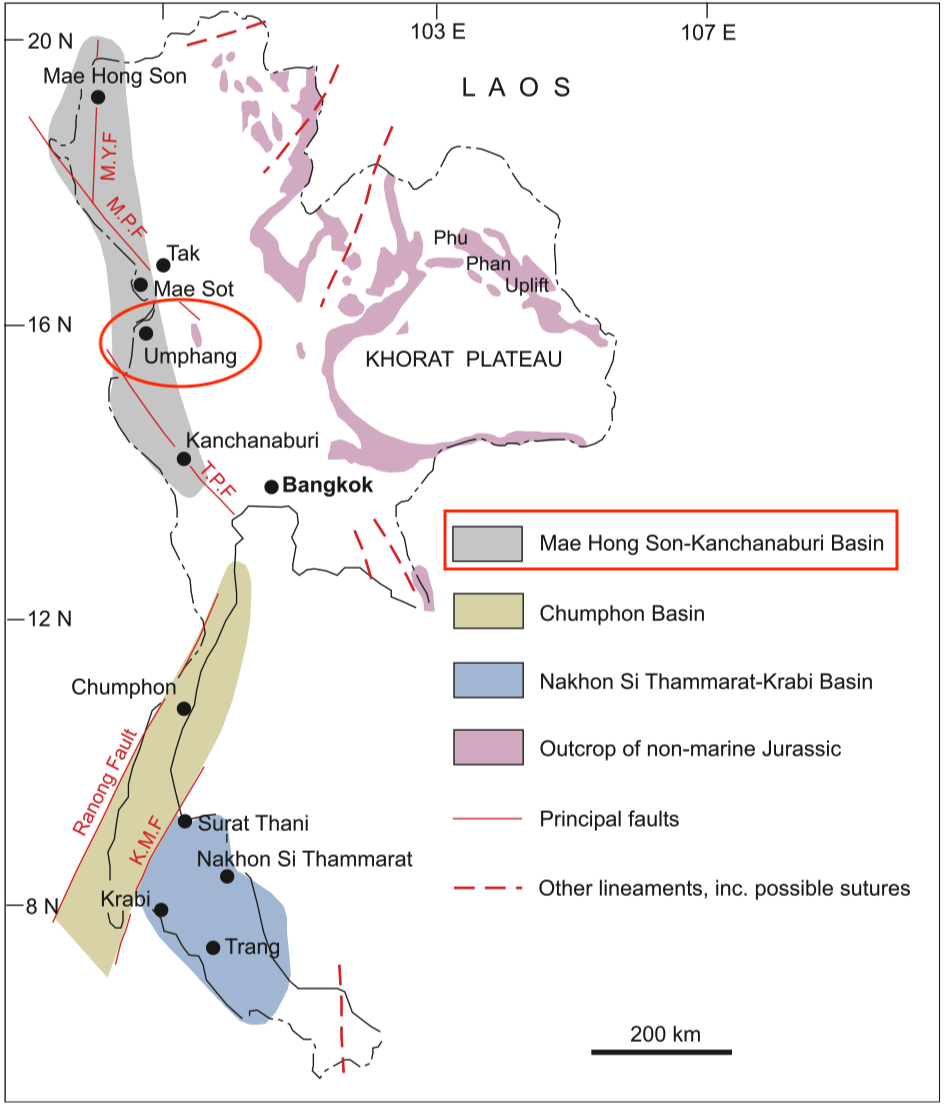Phu Khloe Khi Fm
Type Locality and Naming
Umphang basin, Tak Province. The Phu Khloe Khi Formation has its type section along the track from Ban Klo Tho to Ban Pu Khloe Khi in Myanmar (grid reference 625760, map sheet 4741-III). The unit is also well exposed near the summit of Lu Kloc Tu mountain. Upper-middle formation in the Umphang Gr.
Synonym: หมวดหินปูเคลอะค
Lithology and Thickness
The Pu Khloe Khi Fm consists mainly of dark-grey massive to thick-bedded limestones with abundant oncolitic and stylolitic layers. Oolitic limestones occur locally and are intercalated within the massive beds. The lower part of the formation grades from calcareous sandstone to sandy limestone; the middle and upper portions consist of massive limestone grading up into sandstone of the overlying Lu Kloc Tu Fm. 60 m thick in its type section.
Relationships and Distribution
Lower contact
Conformable onto the Ta Su Kho Fm
Upper contact
Grades upward into the sandstone of the Lu Kloc Tu Fm
Regional extent
Umphang basin, Tak Province. Crops out near summit of Lu Kloc Tu mountain and along the road and the former track from Ban Klo Tho to Ban Nong Luang, the road from Ban De Lo Khi to Thi Lo Sue Falls and 2 km west of the road from Amphoe Umphang to Ban Pa La. Potential extent is Mae Hong Son, Tak and Kanchanaburi provinces.
GeoJSON
Fossils
Fossils are abundant and diverse, consisting of corals, brachiopods, gastropods, bivalves, echinoids and some microfossils. Some individual beds are rich in corals
and brachiopods. An Early Aalenian age is given for the formation based on the foraminifera Timidonella sp. and the alga Holosporella sp.
Age
Depositional setting
Additional Information
Lexicon of Stratigraphic Names of Thailand of 2013.
